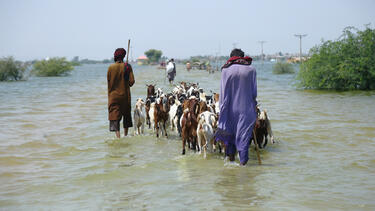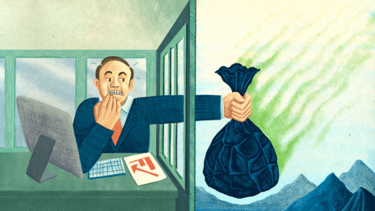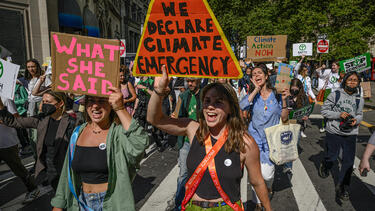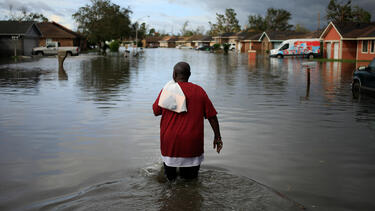Sustainability
Renewable Energy Is Easier Than Ever to Build—and Harder to Talk About
Advances in technology and a maturing development ecosystem have made renewable energy more economical, less risky, and increasingly rewarding for landowners, says Reid Buckley ’89, a partner at Orion Renewable Energy Group. But it has also become more politicized.

Your Packaging Is the Problem
Caroline James ’22 , director of sustainability at Atlantic Packaging, says the current plastics recycling system is broken. She explains how new efforts by businesses and governments could move us toward a more sustainable and circular economy.

Pakistan’s Long, Uncertain Recovery from Devastating Floods
Unprecedented floods have devastated Pakistan’s agricultural economy. Wasif Khan ’86 describes a human toll that will last for years.

Short-Term Earnings Goals Drive More Pollution, Especially for Green Companies
Yale SOM’s Frank Zhang and Jacob Thomas found that firms might increase their pollution when they’re struggling to meet earnings targets—and that firms with a history of environmental responsibility are most likely to engage in this pattern.

We’ve Got Climate Solutions. Now We Need a Movement.
Most Americans agree that the planet faces dire consequences if we don’t do more to address climate change. Anthony Leiserowitz, director of the Yale Program on Climate Change Communication, outlines how businesses and individuals can push for action.

Moving Consumer Brands to Climate Neutral
A nonprofit co-founded by Austin Whitman ’07 is helping consumers direct their spending to brands that are serious about solving climate change by certifying companies that measure their emissions, offset them in the short-term, and move toward decarbonization.

Land Trusts’ New Tools for Fighting the Climate Crisis
Land trusts are bringing innovative new tools to tackle the myriad problems created by climate change.

What Will It Take to Transition to Electric Cars?
Kenneth Gillingham, professor of environmental and energy economics, says that easing range anxiety and helping drivers understand the advantages of electric can help accelerate the shift.

Delivering Decarbonized Transport
Dan Kim ’97, chief strategic officer and director of Next Renewable Fuels, argues that existing elements of the energy and transport sectors can evolve to contribute to a future decarbonized economy, alongside more disruptive innovations.

- Collection No. 7
Confronting the Climate Crisis
Yale Insights is talking with the scholars and practitioners who are providing the expertise and leadership to make the adaptation and mitigation of this unprecedented challenge a reality.

Tallying the Social Cost of Carbon
Casey Pickett ’11, director of the Yale Carbon Charge, explains how to put a dollar value on the myriad choices that make up our response to the climate crisis.
